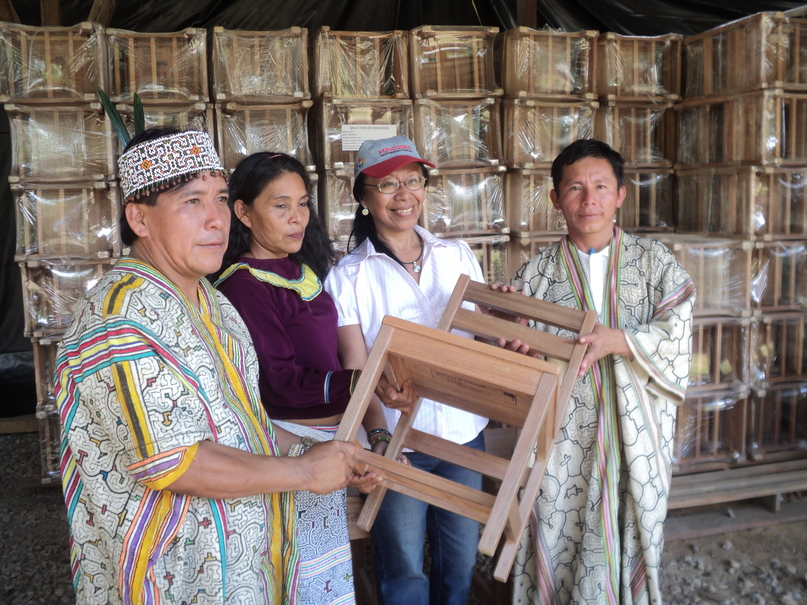Community forestry

Representatives from the indigenous community of Iparia in Peru deliver school furniture through the government’s MYPErú purchasing programme, which benefited from ITTO assistance. ITTO projects have empowered communities to sustainably manage their forests while creating local jobs and livelihoods. Photo: M. Espinoza
The management of forests with or by local communities is an important mechanism for addressing social equity while pursuing the sustainability of the forest resource. Community forestry is an umbrella term encompassing collaborative forest management and smallholder forestry. In the collaborative form, forestry is practised on lands with some form of communal tenure and involves collective action. The smallholder form refers to forestry practised by smallholders on land they own privately and who manage their forest independently or via some form of collective activity.
Community forestry may be the only effective way of achieving sustainable forest management in many forest areas, but it is not easy to implement. Perhaps the biggest obstacle is a lack of locally based tenure rights over forestlands: without long-term rights, people see little sense in investing the time, labour and other resources needed to achieve sustainable forest management. Therefore, the most successful community forestry initiatives are those that build on tenure reforms that favour local people. ITTO’s support for community forestry in its tropical member countries has enabled many communities to improve their livelihoods through the sustainable management of their forests, the local processing of forest products, and greater involvement in green supply chains.
Community forestry may be the only effective way of achieving sustainable forest management in many forest areas, but it is not easy to implement. Perhaps the biggest obstacle is a lack of locally based tenure rights over forestlands: without long-term rights, people see little sense in investing the time, labour and other resources needed to achieve sustainable forest management. Therefore, the most successful community forestry initiatives are those that build on tenure reforms that favour local people. ITTO’s support for community forestry in its tropical member countries has enabled many communities to improve their livelihoods through the sustainable management of their forests, the local processing of forest products, and greater involvement in green supply chains.
Related links
- Watch the video, When the market gives back
- Watch the video Local communities, forest managers par excellence
- Watch the video Strengthening community forests governance in Java & Nusa Tenggara Indonesia
- Watch the video Community forest management in the Brazilian Amazon
- Watch the video 1000 bamboo villages
- Watch the video Mejor capacitación, mejor manejo forestal comunitario (More capacity building, better forest management –interview)
-
Download the technical report, Tropical forest tenure assessment
Published in 2011
-
Download the publication Community-based forest enterprises
Published in 2007
- See ongoing community forestry projects
- See completed community forestry projects